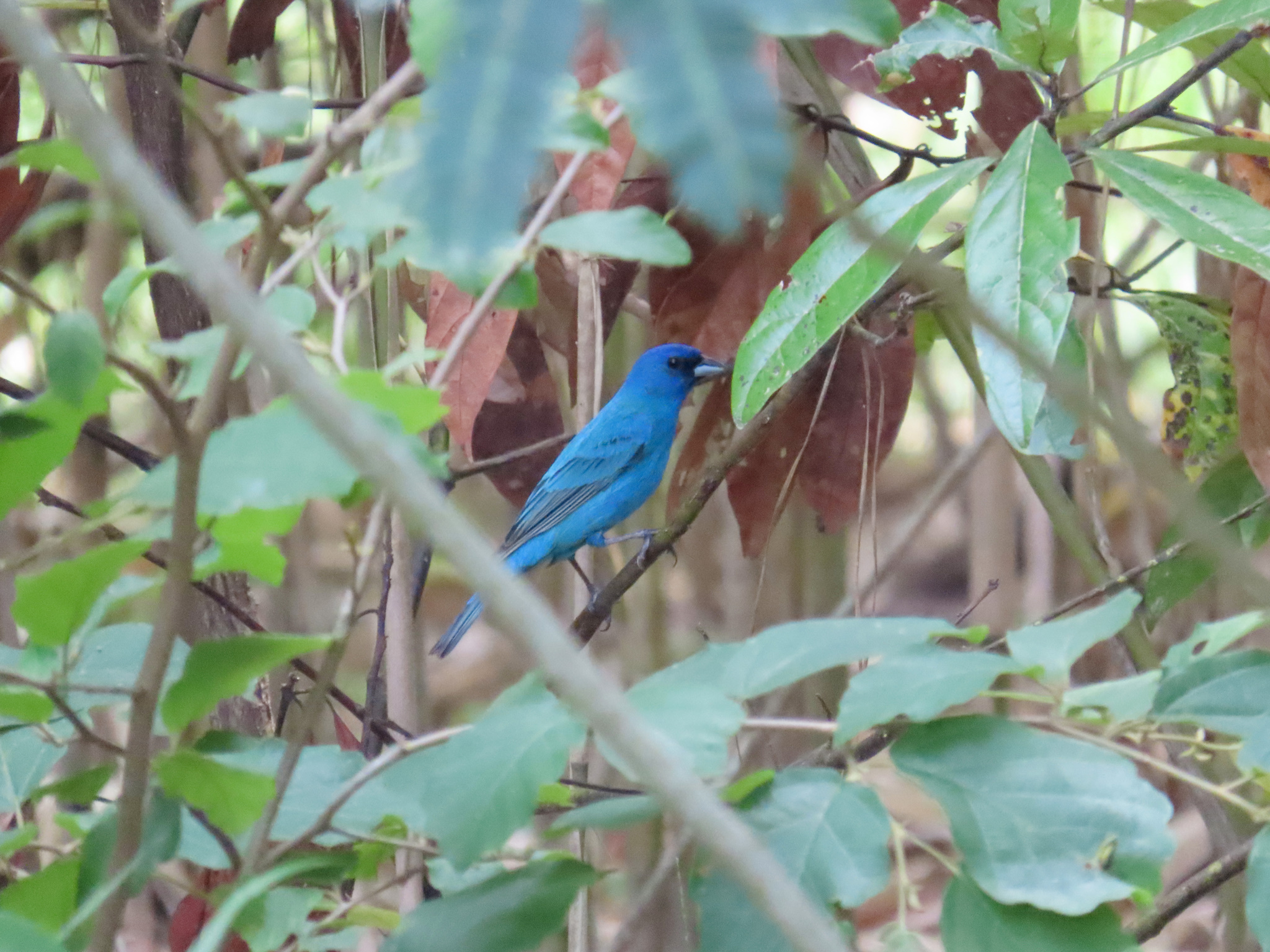
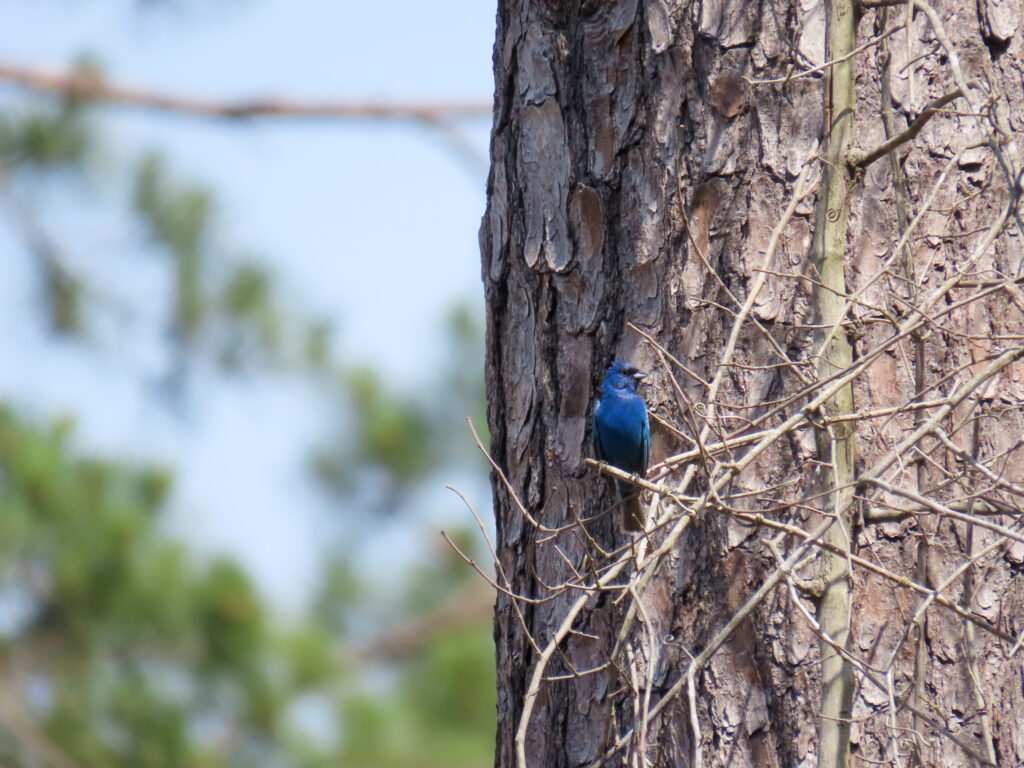
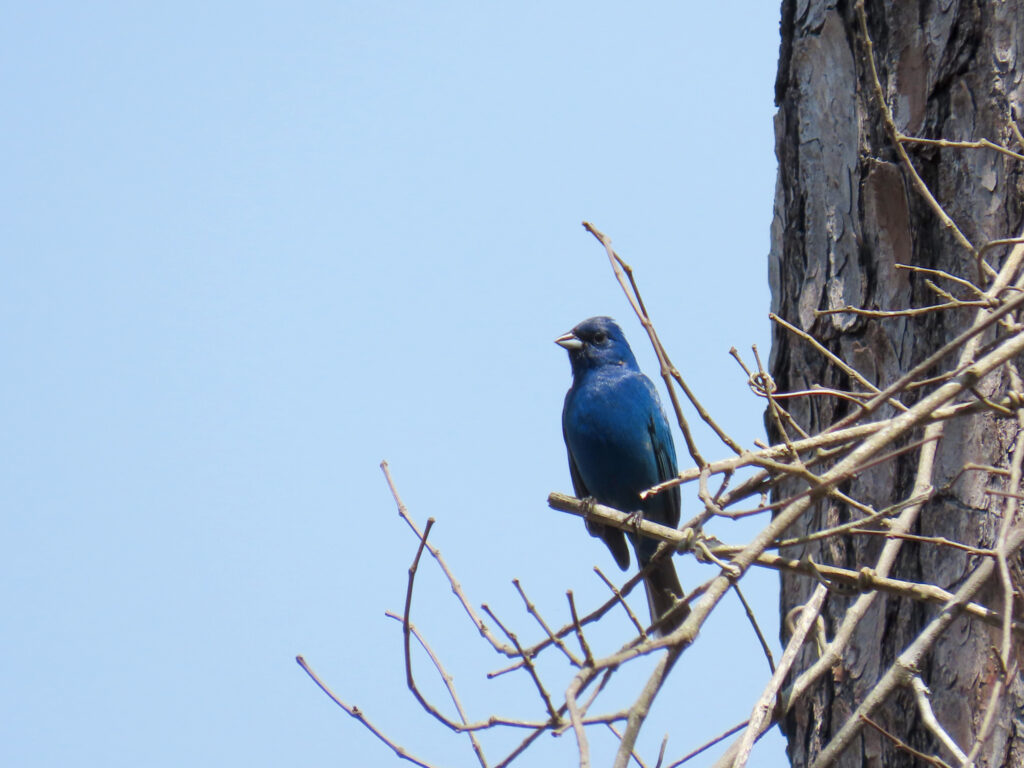
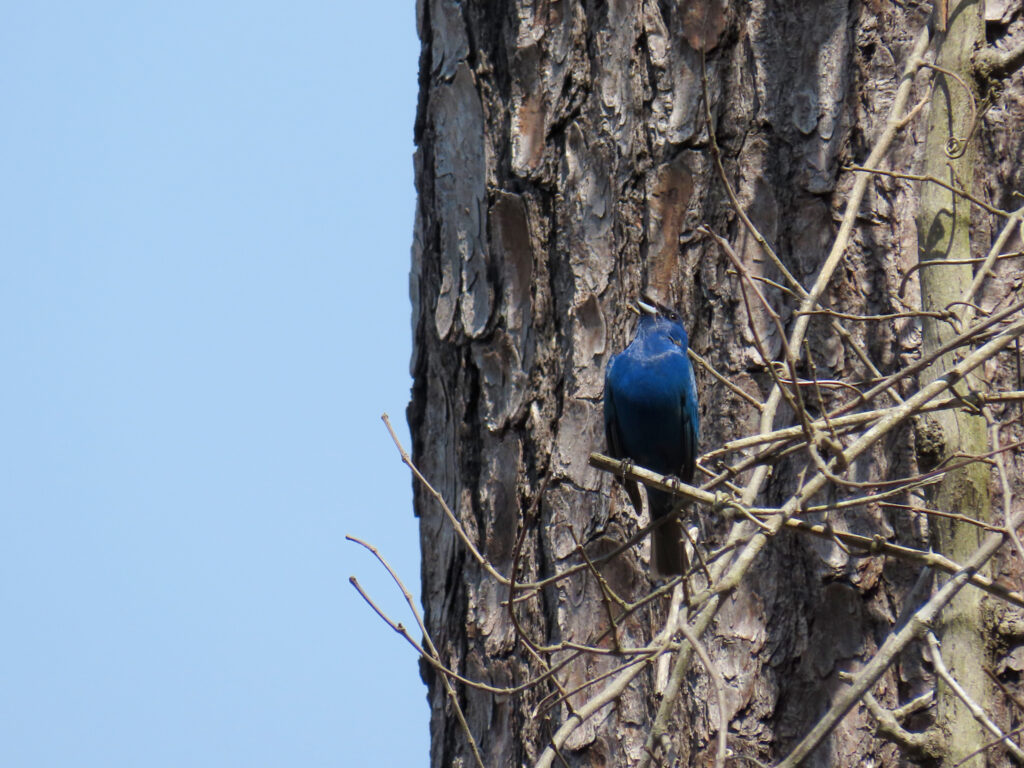

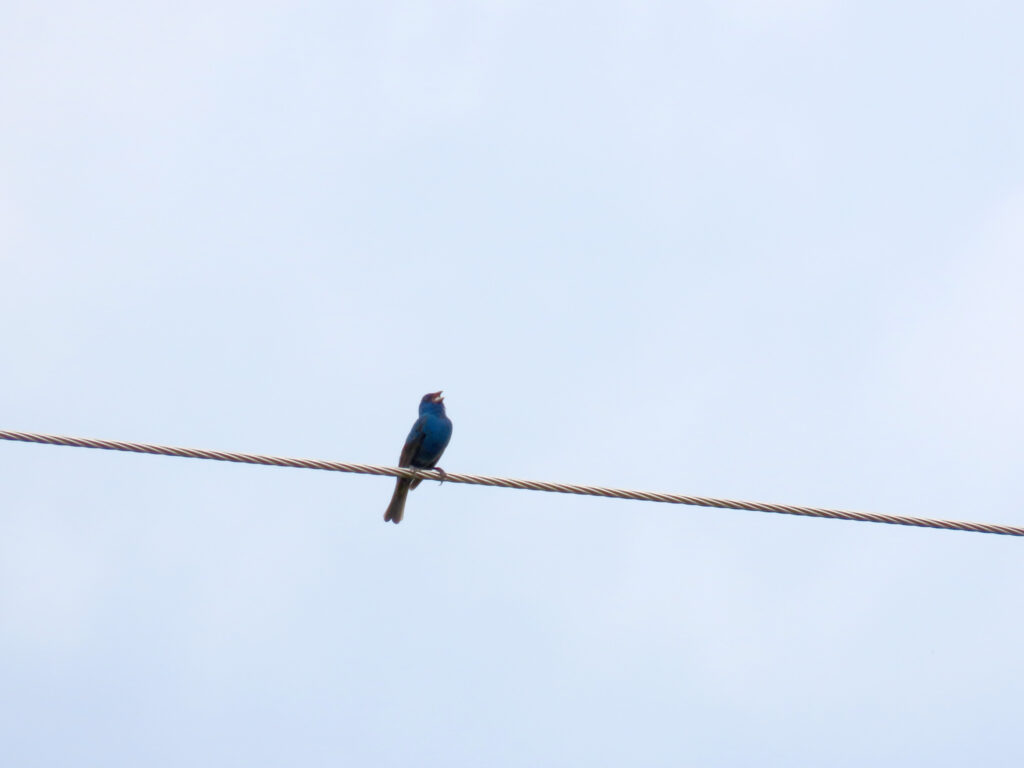
This week for Flora and Fauna Friday we uncover a hidden gem, the sapphire pendant on the pineywoods, the Indigo Bunting (Passerina cyanea).
In the sweltering heat of the summer savanna, below a bluebird sky, a cascade of double notes catches the ear and draws the eye. A cerulean speck trumpets from a treetop, anointing a pine with a rare drop of blue spilled down from the sky. As you strain your eyes to resolve its form, the drop plummets further from the tree, curving on the wind before it collides with the Earth and sinks within the grassy sea of green that flows across the savanna. As quick as it fell it buoys back into sight. Set on a low bough of a flame charred shrub, a brilliance of blue shines like a sapphire amplified in the sun. A male Indigo Bunting presents in rare form.
The Indigo Bunting is found throughout the eastern United States from spring through fall, but under the summer sun is when they shine. They dwell on the boundary of forest and field, in open woodlands, clear cuts, and fringes of farms. Here in the Lowcountry, the Longleaf Pine savannas are their favorite haunts, a perfect middle ground between woodland and grassland. Indigo Buntings are most often heard before they are seen. Males fly to the tops of the tallest trees and serenade the savanna in bird song. Their song is a distinctive stuttered warble, with every phrase spoken twice before moving to the next. When they decide to drop down to the forest floor to forage, you may be blessed enough to watch one up close. Females are camouflaged, pale-khaki below, faded-chestnut upon the back, and ebony in their wings and tail. Contrastingly, male Indigo Buntings are dyed a deep indigo-blue across almost their entire body. The black between their eyes and their pewter-gray bill and down their flight feathers only serves to compliment the richness of their blue plumage. This blue changes in hue depending on how light hits the bird. This unstable hue is due to this being a structural color. Rather than a pigment dyeing the feathers blue, the microscopic shape of the feathers’ vanes force only blue light to reflect. Meaning the stronger and bluer the light, the bluer the Indigo Bunting glows.